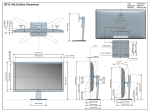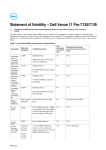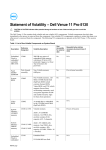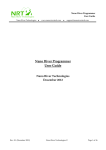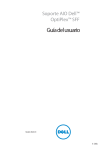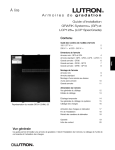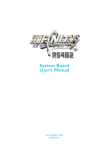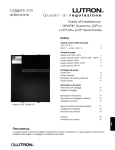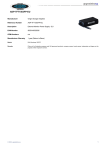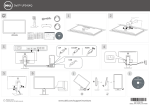Download Dell UP3214Q Monitor Statement of Volatility
Transcript
Statement of Volatility – Dell UP3214Q UltraSharp CAUTION: A CAUTION indicates either potential damage to hardware or loss of data and tells you how to avoid the problem. The Dell UP3214Q UltraSharp Monitor contains both volatile and non-volatile (NV) components. Volatile components lose their data immediately after power is removed from the component. Non-volatile (NV) components continue to retain their data even after power is removed from the component. The following NV components are present on the Dell UP3214Q system board. Table 1. List of Non-Volatile Components on System Board Description Reference Designator Volatility Description User Accessible for external data Remedial Action (Action necessary to prevent loss of data) Serial Flash ROM W25Q16CV I245 / I248 / I251 Non-volatile Flash memory, 16M bit. To store firmware. No Part place on Interface Board, it has hardware/software write protected. EEPROM M24512 I246 / I249 / I252 Non-volatile memory, 512k bit. To store DP EDID, HDCP and user adjust data. No Part place on Interface Board, it has hardware/software write protected. DDR3 SDRAM NT5CB64M 16FP-DH I225 / I226 / I227 / I228 / I229 / I230 Volatile memory 1Gbit (64Mbx16). To store video data stream and firmware code. No Part place on Interface Board. EEPROM 24C02 I224 Non-volatile EEPROM 2Kbit. To store HDMI EDID data. No Part place on Interface Board, it has hardware/software write protected. Serial Flash ROM PM25LD020 I233 Non-volatile Flash ROM 2Mbit. To store firmware. No Part place on Interface Board, it has software write protected. EEPROM 24C02 I241 Non-volatile EEPROM 2Kbit. To store monitor DC on / off store. No Part place on Interface Board, it has software write protected. Serial Flash ROM PM25LD010 I902 Non-volatile Flash ROM 1Mbit. To store firmware. No Part place on Card Reader Board, it has software write protected. CAUTION: All other components on the system board lose data if power is removed from the system. Primary power loss (unplugging the power cord and removing the battery) destroys all user data on the memory (DDR3, 1067 MHz). Secondary power loss (removing the on-board coin-cell battery) destroys system data on the system configuration and time-of-day information. ______________ © 2013 Dell Inc. Trademarks used in this text: Dell™, the DELL logo, Dell Precision™, OptiPlex™, Latitude™, PowerEdge™, PowerVault™, PowerConnect™, OpenManage™, EqualLogic™, KACE™, FlexAddress™ and Vostro™ are trademarks of Dell Inc. Intel®, Pentium®, October 2013 Xeon®, Core™ and Celeron® are registered trademarks of Intel Corporation in the U.S. and other countries. AMD® is a registered trademark and AMD Opteron™, AMD Phenom™, and AMD Sempron™ are trademarks of Advanced Micro Devices, Inc. Microsoft®, Windows®, Windows Server®, MS-DOS® and Windows Vista® are either trademarks or registered trademarks of Microsoft Corporation in the United States and/or other countries. Red Hat Enterprise Linux® and Enterprise Linux® are registered trademarks of Red Hat, Inc. in the United States and/or other countries. Novell® is a registered trademark and SUSE ™ is a trademark of Novell Inc. in the United States and other countries. Oracle® is a registered trademark of Oracle Corporation and/or its affiliates. Citrix®, Xen®, XenServer® and XenMotion® are either registered trademarks or trademarks of Citrix Systems, Inc. in the United States and/or other countries. VMware®, Virtual SMP®, vMotion®, vCenter®, and vSphere® are registered trademarks or trademarks of VMWare, Inc. in the United States or other countries.



